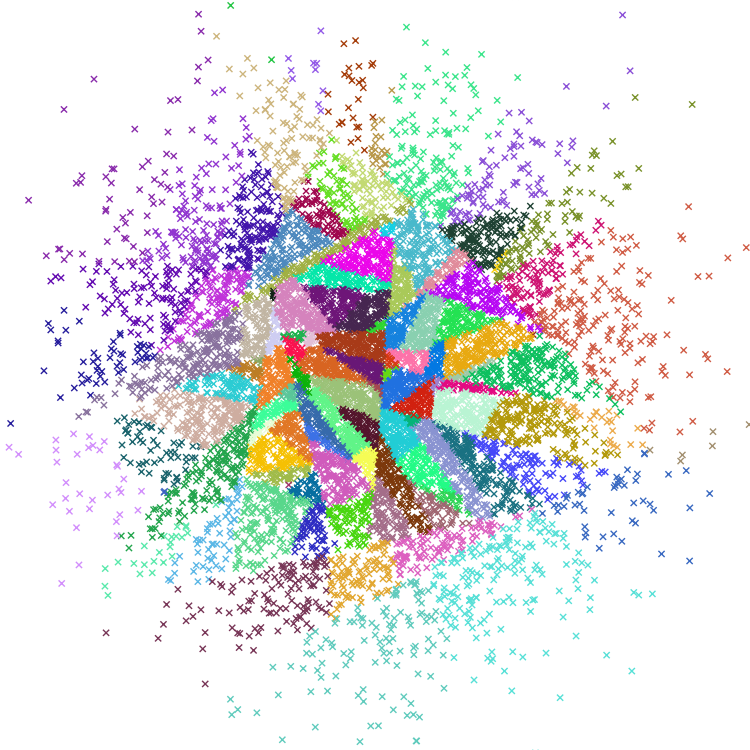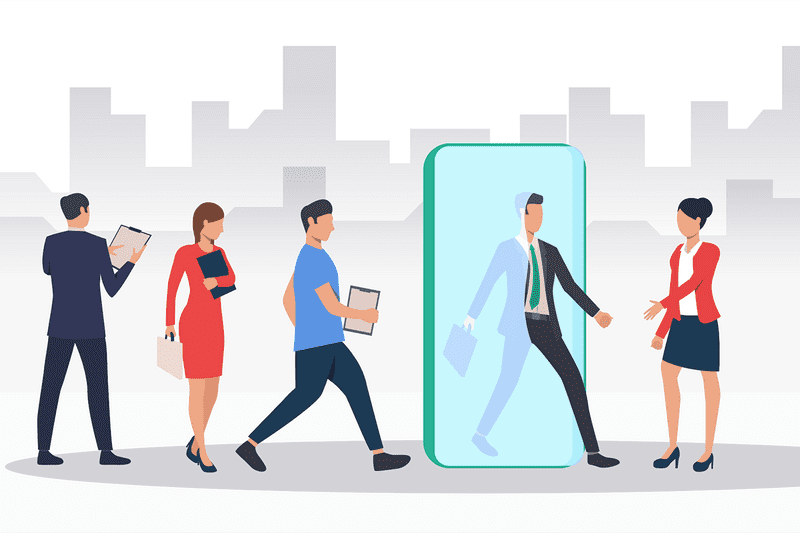Spotify listeners are likely familiar with the annual buzz that surrounds Spotify Wrapped. At the end of each year, Spotify provides users with a summary of their music history, top artists, favorite genres, and total minutes of music, and more—all wrapped up in an interactive, colorful, elaborately-designed display. It’s a fun and intuitive way to use big data.
In this post, we break down how Spotify Wrapped works, why it’s so effective, and how Spotify is leading the charge in creating an emotional connection with its consumers through data.
Telling a story with data
The use of data behind Spotify Wrapped goes beyond just simple analytics. Spotify has tailored its listening platform to include built-in ego-boosters for users. At the end of the year, users will get a report that tells them they’re in the top 1% of a band’s most loyal followers or that they are among the bold, non-mainstream music listeners. Put simply, Spotify gives its data right back to its users—but the way the data is presented is what gets people excited in a similar way that a personality test might.
Spotify users love it. Whether it’s the feigned embarrassment around sharing their guilty pleasure songs or the confirmation that Spotify has recognized their favorite artist, the emotional validation from seeing this data neatly packaged and presented feels gratifying. Spotify creates an experience, telling a story with music data. As Haley Weiss wrote in The Atlantic, “seeing top songs on Spotify Wrapped is like seeing an old best friend that you lost touch with.”
This type of organic engagement is a key reason Spotify has built Wrapped into its long-term marketing model. Spotify listeners flood social media platforms with screenshots of their profile and links to their playlists, showing friends and family exactly how they measure up. Music is inherently a social experience, and by coupling its use of data with a strong user experience tailored for social media, Spotify becomes inherently self-marketable as users organically publicize their engagement.

Data + design = emotion
Presenting data insights—rather than the raw data itself—to users is part of a bigger trend in the tech industry. Hobson Lane, a data science mentor at Springboard, says that people are starting to preferentially go to companies that let them learn about themselves. “People love to know about themselves, to talk about themselves,” he said. “The more companies are sharing that data, the more [people] are getting addicted to that data and wanting more of it.”
This new way of using data insights is inherently playful, thought-provoking, and rewarding for both companies and consumers—and those looking to break into a career in data science should expect to see more of this trend.
Maria Dyshel, the CEO of TangibleAI, a startup that helps nonprofits and social businesses deepen their understanding of machine learning technology, says there’s an important distinction to be noted between the way Spotify chooses to share insights versus simply sharing the data in its raw form. “If you go to Facebook, you can download all the data that Facebook has on you,” she said. “But ultimately, it’s just a big ugly file or table or CSP or JSN—there is a limit to how attractive you can make the raw data. What you can make attractive is the insights.”
Making insights not just useful but attractive is a great use case for UX design. Spotify Wrapped is a stellar example of how powerful UX design can create intrigue and drive engagement around something that would otherwise go overlooked. After all, how often do we get to self-indulgently stroll down memory lane? While on a technical level, the Spotify recommender systems show users explicitly how Spotify chose particular songs, genres, or artists, on an emotional level, people feel that they have been individually acknowledged.
The UX design is what’s behind creating this special connection. Here’s why it works:
- Strong visual focus. The visuals used in the report are attractive for a reason. Spotify Wrapped uses specific palettes according to color psychology to get positive reactions. While bright, neon colors trigger personal happiness and excitement, here they are modified into uncommon hues and naturally become attention grabbers when shared on social and screenshotted.
- Simplified social sharing. Spotify Wrapped encourages sharing—and this creates organic marketing for not only the music but for the platform itself. As noted in this UX analysis, “by creating beautiful visual imagery with the Spotify Wrapped presentation and enabling people to share more about their music than just a song, Spotify is creating more room for conversations.”
- Interactive and dynamic presentation. When engaging with the report, users will notice that pictures move alongside the mouse or smoothly glide across the screen. It’s easy to navigate and extremely fluid, and there’s even a degree of customization a user can do before sharing it, like changing the background or font colors for ideal personal branding.

Sharing is caring
Making Spotify Wrapped as shareable as possible is a key driver behind the campaign’s success. The human brain loves patterns, routines, and boxes—but we also love the thrill of discovering something new about ourselves. “This type of self-quantification has become more and more popular recently,” Dyshel said.
And it’s not just a matter of creating joy or discovery but also improving the personal experience.
“I’ve seen a lot of trends where people talk about how, we as individuals or as families, start to run ourselves more and more as businesses,” she continued. “For example, today’s families might use Trello or other project management tools to coordinate house chores…we try to become more and more efficient, and as part of this ‘run ourselves as businesses’ mindset, people want to see more data about themselves.”
Get To Know Other Data Science Students
Haotian Wu
Data Scientist at RepTrak
Bret Marshall
Software Engineer at Growers Edge
Diana Xie
Machine Learning Engineer at IQVIA
How does Spotify Wrapped work?
When compiling the Spotify Wrapped reports, Spotify relies on three recommendation models:
- Collaborative filtering uses information about other listeners to contribute to the algorithm’s understanding of your listening habits. Users with similar habits will have similar taste profiles—which Spotify then uses to map out where listening trends fall based on metrics such as how often or for how long you play certain music. This creates a space for curated exploration, which users most often interact with via the Discover Weekly feature.
- Natural Language Processing (NLP) allows Spotify engineers to turn playlists into text documents to identify and analyze relationships between lyrical patterns. Interestingly, NLP is also useful for navigating music without lyrics as it more regularly cuts across genres and brings users new alternatives to what they’re used to.
- Audio models are key to Spotify’s ability to match listeners with newly released music based on their past listening trends and preferences. Spotify uses audio models and neural networks to “process raw audio to produce a range of characteristics, including key, tempo, and even loudness.” For emerging artists on their way to being discovered, this feature is key.
Integral to Spotify’s data science methods is a cross-disciplinary approach, according to Spotify’s head of creator product insights, Sara Belt. Spotify turns to data science strategies not only to understand their user’s data—but their users. Spotify is unique in that their user research and data science teams are combined into one product insights team, which aims to employ a broad range of research methods to “drive evidence-based decision making,” according to Belt.
Cultural literacy is equally important to the brand’s success as consumer data, and by focusing equally on both, the brand gains a comprehensive understanding of their market. Peter Gilks, Spotify’s head of free product insights, wrote: “As the qualitative findings develop, the data scientist can begin searching for data points that reflect the human activities we are witnessing.”

Spotify’s ANNOY Library
One of the most groundbreaking ways Spotify Wrapped uses data is through the creation of a library that accurately predicts listeners’ preferences. Spotify didn’t simply find a way to recommend songs based on what you’re listening to. The company created a library called ANNOY. Github defines it:
“ANNOY (Approximate Nearest Neighbors Oh Yeah) is a C++ library with Python bindings to search for points in space that are close to a given query point. It also creates large read-only file-based data structures that are mmapped into memory so that many processes may share the same data.”
Put simply, Annoy is used to search for points that are close to a particular query point. In Spotify’s specific case, the songs a user is recommended is based on their listening preferences and patterns. Annoy also can allow multiple processes to share the same data: this is done by creating large, read-only file-based data structures that are mmapped into memory. What sets Annoy apart from other libraries is exactly this ability to use static files as indexes, letting data scientists share indexes across processes—all while minimizing memory footprint to keep indexes small.
Spotify open-sourced the Annoy library to the public, granting millions of data scientists and developers access to use the technology. Companies like Instacart have relied on Annoy to make more accurate predictions around users’ buying habits and make better recommendations.
Leveraging data for social impact
By making their data available publicly, Spotify joins a growing list of companies attempting to use their data to drive positive change. “Companies like Spotify produce public web APIs that let users see some of the data publicly so that developers can get access to anonymized and aggregated statistics,” Lane said. “So you can’t tell who listened to what song, but you can see what songs are popular in which states, for example.”
When companies like Spotify give this type of access, it helps Springboard students use data for a good cause in their own data science projects.
“Students are using [data] for good, they’re using it to go out and build things—and that’s all been put out there by companies that are trying to make the world a better place.”
Since you’re here…
Curious about a career in data science? Experiment with our free data science learning path, or join our Data Science Bootcamp, where you’ll get your tuition back if you don’t land a job after graduating. We’re confident because our courses work – check out our student success stories to get inspired.






